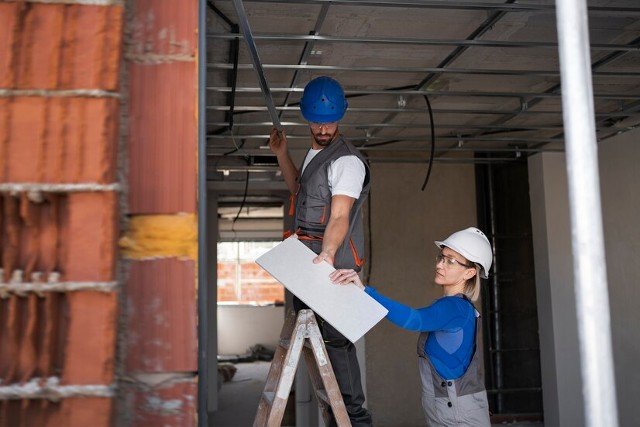Heating, Ventilation, and Air Conditioning (HVAC) construction projects are at the heart of the built environment, playing a key role in ensuring the comfort and air quality of diverse structures. This intricate sector involves not only the installation of heating and cooling systems but also demands a comprehensive approach to project management. This article examines into the nuanced aspects of HVAC construction projects, examining market trends, project phases, persistent challenges, and the promising outlook that lies ahead.
Market Trends
The HVAC construction industry is undergoing significant transformations driven by key trends shaping its business landscape. A notable trend is the escalating demand for energy-efficient and sustainable HVAC solutions. Clients are increasingly prioritizing systems that provide optimal comfort and adhere to green building standards. This shift necessitates HVAC construction firms to embrace innovative technologies and design principles that optimize energy consumption and reduce environmental impact.
Another pivotal trend is the integration of smart and connected HVAC systems. With the advent of the Internet of Things (IoT), clients now seek solutions that offer remote monitoring, predictive maintenance, and advanced energy management. To meet these expectations, HVAC construction businesses are incorporating smart sensors, cutting-edge controls, and data analytics to enhance system performance and empower clients with greater control over their indoor environments.
In the context of the evolving HVAC construction industry, companies seeking comprehensive mechanical construction services can explore the offerings available at https://dmi-kc.com/services/mechanical-construction/.
Moreover, the demand for retrofits and upgrades in existing HVAC systems is on the rise. As older buildings strive to meet modern energy standards, HVAC construction projects are adapting to revitalize and optimize these systems. This trend allows businesses to showcase their expertise in system modernization, energy conservation, and cost-effectiveness.
Project Phases
HVAC construction projects unfold through a well-defined series of phases, each playing a crucial role in project success. The initiation phase involves in-depth client consultations, needs assessments, and the formulation of detailed project specifications. This groundwork lays the foundation for the subsequent design phase, where HVAC engineers meticulously craft plans and schematics, accounting for variables such as building layout, load calculations, and energy efficiency.
Upon approval of the design, the construction phase kicks in, entailing the installation of HVAC equipment, ductwork, and control systems. This phase emphasizes quality assurance and compliance with stringent safety standards. Following construction, the commissioning phase ensures that the HVAC system operates precisely according to the approved design specifications. Finally, ongoing maintenance becomes paramount, ensuring the system’s longevity and sustained optimal performance.
Challenges in HVAC Construction Projects
While the HVAC construction sector offers lucrative opportunities, it is not without its share of challenges. One recurring challenge is the ever-evolving regulatory landscape. HVAC systems must conform to local building codes, environmental regulations, and energy efficiency standards. Staying abreast of these regulations and adapting designs accordingly is crucial to avoid project delays and legal complications.
Material cost volatility is another persistent challenge. The HVAC industry relies heavily on materials such as steel, copper, and aluminum, whose prices are subject to fluctuations in global markets. Effective procurement strategies and the establishment of robust supplier relationships are imperative to mitigate the impact of price volatility on project budgets.
Labor shortages pose an ongoing challenge in the HVAC construction business. The demand for skilled engineers and technicians is high, making attracting and retaining talent a daunting task. Some companies are addressing this challenge by investing in training programs and technology solutions that enhance workforce productivity.
Future Outlook
The trajectory of HVAC construction projects holds promising advancements, driven by technological innovations and evolving consumer preferences. Anticipated developments in the industry include a notable uptick in the incorporation of renewable energy sources, like solar and geothermal, to power HVAC systems. This aligns seamlessly with the expanding emphasis on sustainability and the imperative to diminish carbon footprints.
The integration of artificial intelligence (AI) and machine learning (ML) is set to revolutionize HVAC systems. Predictive maintenance algorithms can identify potential issues before they cause system failures, reducing downtime and enhancing overall system reliability. The prevalence of smart HVAC systems is expected to rise, offering personalized comfort settings based on individual preferences and habits.
Conclusion
In summary, the HVAC construction project business is a dynamic and evolving sector at the intersection of comfort, efficiency, and innovation in the built environment. As the industry responds to trends favoring sustainability, smart technologies, and energy efficiency, businesses must adapt to remain competitive. Navigating challenges related to regulatory compliance, material costs, and labor shortages requires strategic planning and a commitment to innovation. Looking ahead, the HVAC construction industry is on the cusp of transformation, driven by advancements in renewable energy, AI, and an unwavering commitment to providing optimal comfort while embracing environmental responsibility.



